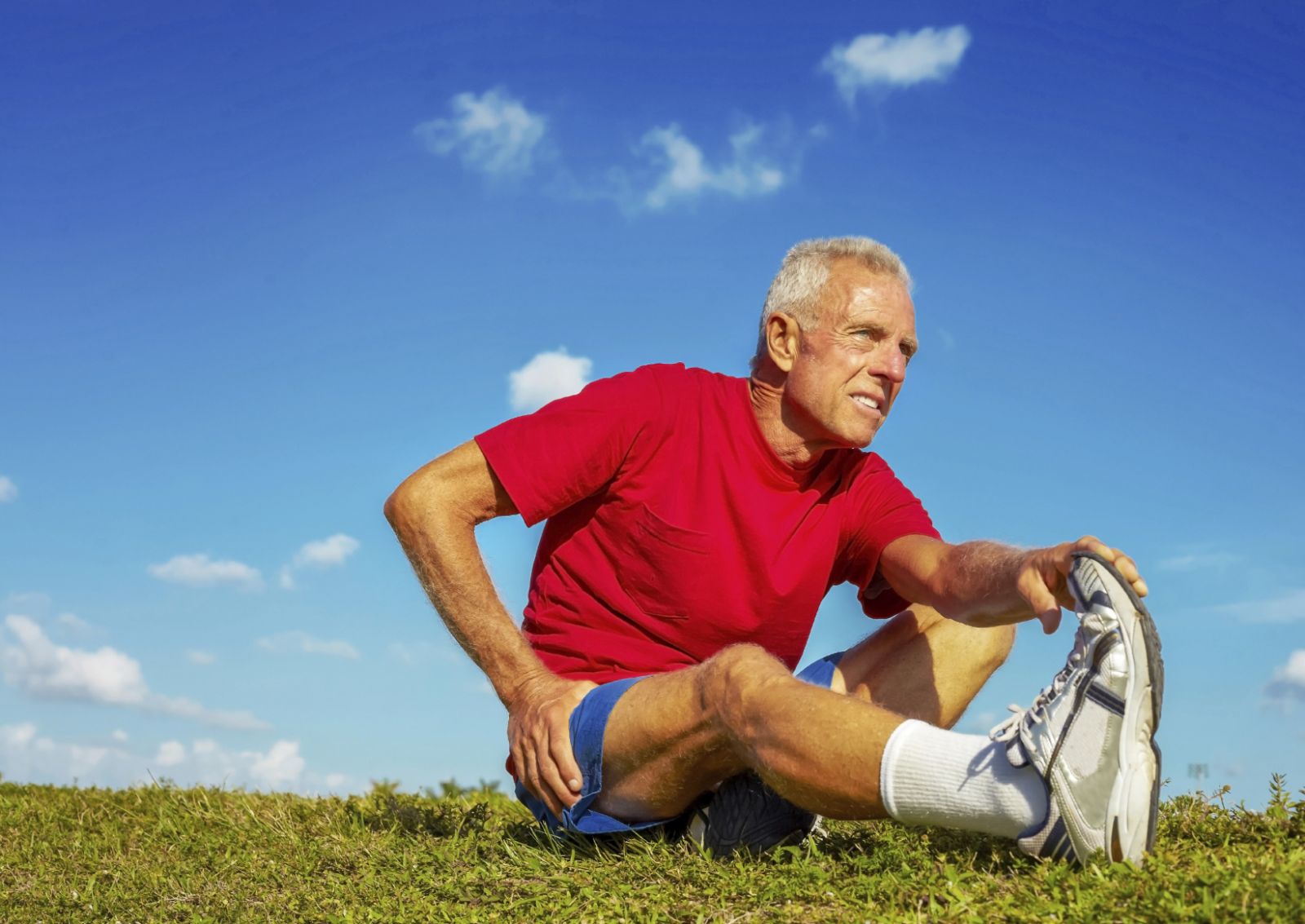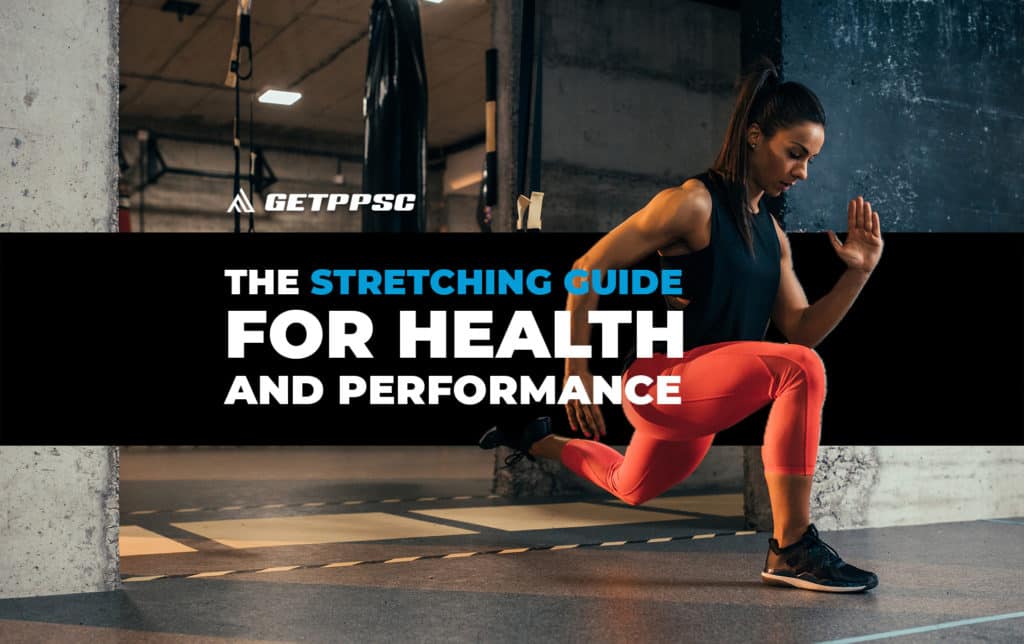OH NO, NOT ANOTHER STRETCHING ARTICLE.
Stretching. I know you cringed when you saw that in the title. However, this is still such a high debated, hot button topic in both the rehabilitation and strength and conditioning world. On the spectrum of stretching you will hear everything from “well, a cheetah never stretches and neither should you if you want to squat heavy” to the other end of the spectrum where stretching and mobility are looked at as cure-all interventions and the only thing required for health and longevity.

We can all agree, increasing tissue extensibility and improving controllable range of motion are important things. The question is, do we really need to stretch before activity and if so, for how long?
TYPES OF STRETCHING
The overall goal of stretching is to improve range of motion for an activity. This is accomplished via decreased stiffness of the muscle-tendon unit (via alterations in passive visco-elastic properties) and also by increased tolerance to the stretch itself. Theoretically, these both result in less energy requirements to move a limb through space with a simultaneous improvement in force and speed of contraction.(1,2)
One of the biggest issues in the stretching literature is the inconsistency in naming specific stretching types. For example, there are multiple articles that discuss static stretching when in actuality the stretching performed was more dynamic.
For our purposes, we will define 3 MAIN TYPES of stretching that are used in stretching literature.
.
Static Stretching (SS)– involves lengthening a muscle until either a stretch sensation is reached or a point of discomfort is reached and then holding in that lengthening position for a set period of time.(3)
Dynamic Stretching (DS)– involves performance of a controlled movement through the range of motion (ROM) of the active joints.4We could also fit ballistic stretching in here but that type of stretching is no longer recommended due to inherent injury risks.(5)
Proprioceptive Neuromuscular Facilitation (PNF) stretching- involves SS components as well as isometric contractions in a cyclical pattern with the goal of enhancing joint ROM. PNF includes 2 common techniques which are contract-relax (CR) and contract relax agonist contract (CRAC).(6)

A fourth type that is rarely discussed in the stretching literature is loaded stretching. Although not extremely popular in gyms, this type of stretching may be the best for carry over to lifting because it involves loading tissues through their controllable range of motion while allowing an individual to work on what I like to call “mostability” (mobility + stability at the same time). An example of this would be a top down Romanian Deadlift in order to increase hamstring motion. Or an elevated loaded calf raise in order to increase ankle dorsiflexion range of motion. The key to loaded stretching is working only through a controllable, not compensatory, range of motion.
STATIC VS. DYNAMIC
*SCIENCE-BASED NERD ALERT*
A major reason that the pendulum keeps swinging endlessly on stretching is due to inconsistencies with type of stretching (static vs dynamic) recommendations. For example, significant reductions in maximal voluntary strength, muscle power and contractile properties have been recorded after a single bout of static stretching.(2,7,8) It is theorized that this happens due to neural and peripheral reasons, most specifically from musculotendinous stiffness reductions.(2,7) Therefore, most literature will suggest that static stretching be used carefully or not at all during warm ups in order to avoid any decreases in muscle performance or “stretch induced strength loss”.(9) Multiple studies will suggest that acute bouts of dynamic stretching as part of a pre-performance routine will result in greater flexibility and power output than static stretching. (2,10,11) Now this is where it gets a little confusing because there are also numerous studies that report impaired performance after dynamic stretching.(12-16) However, a deeper dive into these specific studies by Opplert, et al 2017 identified multiple research design flaws (such as confusing static and dynamic terms).
There are other challenges in interpretation of stretching literature specifically as it applies to dynamic stretching. Authors will use the word dynamic to describe what is really ballistic stretching and these same authors very poorly define their stretching parameters.
Studies also have multiple different designs (stretching on single joint vs multiple joints, moving vs staying stationary) that are challenging to interpret due to inconsistency in wording. Authors will also combine data from ballistic and dynamic stretching protocols in order to make a recommendation. This is an obvious flaw as ballistic stretching has been shown to have negative effects on muscle performance (17,18) while dynamic stretching has demonstrated either no effect or positive effects.
As one can see, truly diving into the literature for an answer on stretching is extremely challenging as there are many studies with inconsistencies, design flaws and contradictory conclusions between studies. However, when examining the evidence in its entirety two main themes start to emerge.

Warming up/mobility work (that can include stretching) is superior to non-warm up and non-stretching for increased performance.(2,3)
Dynamic stretching may be a better choice over static stretching however the effect size (the difference between two variables) is small. (2,3)
DURATION OF STRETCHING MATTERS
Now that we have established the role of stretching in a warm up, one of the biggest questions becomes, how long should I stretch?
One of the largest factors that is presented as a reason for reduced performance with stretching is the duration of the stretch. On the surface, this seems to make sense. If you hold a muscle in an elongated position for a few minutes, that muscle will have a hard time contracting quickly to perform an activity. A recent meta analysis from the Journal of the American College of Sports Medicine looked at 106 different studies to help determine the optimal stretch duration. The magic number is 60 seconds. Decreased muscle performance occurred consistently (61% of the studies included) with stretching duration >60 seconds. On the opposite side, stretching time <60 seconds did not inhibit performance or reduce muscle strength or force production.(19) There are also some interesting findings that if static stretching is performed at least 10 minutes prior to the activity then performance is not affected whereas dynamic stretching can be performed as close as 2 min prior to activity with a muscle performance improvement.(2) This finding is consistent with prior research that demonstrates decreased muscle strength, decreased running and jumping performance when these activities were executed immediately after static stretching.(20-25) As you can see, both the timing and duration of stretching can have either a positive or negative influence on your performance.
WHAT YOU DO IMMEDIATELY AFTER STRETCHING MATTERS
If we think about an entire warm up routine and where stretching “fits” then we also need to appreciate that what we do directly after stretching also matters. For optimal performance, we should not be stretching and then jumping right into the squat rack with 405 on the bar.
For the past 15-20 years, stretching research has typically focused on the effects on performance based only on a stretch intervention rather than fitting stretching into an entire warm up sequence that includes more sports specific activities. There are a few studies who have included actual exercises (such as weighted vests, squats with 20% of body weight and resisted leg press) into a warm up in an attempt to supplement the warm up sequence. (26-28) There are others that used explosive movements (like jumping) and have demonstrated that an improvement in muscle performance when dynamic activities were performed post-stretching but pre-activity/sport.(29-30)
Interestingly, when a movement-specific warm-up was implement after stretching, muscle performance improved.(31) This is true for BOTH static and dynamic stretching. So it seems that it may be MORE important to perform sports/movement-specific movements post-stretching/pre-activity then choosing the “correct” stretching modality (static vs dynamic). Generally, the warm-ups that use static stretching demonstrate the worst performance scores whereas specific warm ups produce the highest explosive force scores.31 However, activity-specific warm ups even negated the adverse muscle performance effects of static stretching.31 This goes to show how you stack and program your warm up sequence matters.
PRACTICAL APPLICATIONS
When it comes down to how to apply evidence and stretching protocols, we all need to first appreciate the large disconnect between research and every day clients. As you can see, the stretching research is widely inconsistent on good, solid recommendations which makes it extremely frustrating when trying to apply these concepts to the person in front of you. After 8 years of working as a clinician and going on 20 in the strength and conditioning world, here are a few things I have found that can help you make real time decisions.
First off, stretching in and of itself is not a cure all intervention. Just because “it hurts” does not mean stretch it and it will all of a sudden not hurt. I have seen this countless times and made this mistake early in my career.

Now, acute stretching does have an immediate impact on pain due to the neuro-bio-physiological effect on the brain from stimulation of mechanoreceptors. This stimulation of mechanoreceptors can immediately have a positive influence on what someone may perceive as “tightness” or “tone”. That’s cool, but the problem is not with the stretching itself, it has to do with the complete lack of reinforcement of the purpose you stretched in the first place. To put it more simply, stretching without strength is dead. If I perform a stretch motion to improve a specific range of motion but I neglect to do something meaningful to support why I stretched in the first place, then guess what? I will be right back to doing the same stretch again thinking “maybe if I just stretch it one more time it will finally work”. I have never stretched anyone back to health and neither will you.
Second, mobility is only as important as the range of motion you can control. Think about this, if we open up a new range of motion by taking the internal parking break off the brain but we neglect to provide strength through this new range of motion we are essentially creating an unstable pattern. As an example, one of the most common areas I see this in is in the low back pain population who also complain about their hamstrings being tight. We have all seen this person. They have straight leg raises to 35 degrees, they cannot even come anywhere near touching their toes. It is pretty obvious there is a posterior chain mobility issue happening.
The question becomes, is the movement limited due to muscle shortness or is the muscle short due to weakness. 95%+ of the time, the answer is the latter and stretching will actually make this person WORSE! Why? Due to a lack of glute strength and the hamstrings holding on for dear life! IF we only stretch and give them a new found range of motion without improving their hamstrings/glutes ability to control this new ROM then they will end up worse then when we started. Mobility without control is instability. If you are going to stretch, you have to strengthen.

Finally, If stretching is a large part of your routine, then you are missing the point and leaving strength on the table. For our clients (and ourselves) time is of the essence. People do not have the time to perform 45 min warm ups followed by 60 min workout sessions. This is why it is important to structure a warm up and mobility routine that matches that individual’s problem area that is the main limiter to the workout for that day. For example, if you have heavy squats planned you are most likely not going to do pec mobility work pre-squat. It just does not make sense. Rather, most people’s squats are limited due mobility at the ankle or hip complex. These would be the area(s) we would want to focus on to improve that pattern for that day. Taking it one step further, being able to identify that one thing that is the MOST important to improve mobility for that session will not only increase your clients performance and longevity but it will also save you valuable warm up time that can be dedicated elsewhere.
THE VERDICT
Stretching is still one of the most debated topics in the health and wellness field. When deep diving into the research, concrete answers are extremely hard to find due to multiple inconsistencies in the research. However, the themes that are consistent for improving muscle performance are:
*Stretching is superior to non-stretching
*Dynamic stretching is superior to static stretching (but not by much)
*Stretching >60s per muscle group decreases muscle performance
*Sports/activity-specific movements post-stretching are better for performance than none at all.

When it comes down to it, stretching should really be a small percentage of an entire warm-up sequence. There is absolutely no need to roll around on the ground stretching every muscle prior to exercise. Get in, stretch with a dynamic/static component for <60 seconds, hit some activity-specific movements and move on. Remember, the goal of training is to TRAIN and get stronger, not to become the next Cirque du Soleil performer.
References
- Does Stretching Improve Performance? A Systematic and Critical Review of the Literature Ian Shrier, MD, PhD. Clin J Sport Med • Volume 14, Number 5, September 2004
- Acute Effects of Dynamic Stretching on Muscle Flexibility and Performance: An Analysis of the Current Literature Article in Sports Medicine · October 2017. DOI 10.1007/s40279-017-0797-9
- Behm, DG, Blazevich JB, et al Acute effects of muscle stretching on physical performance, range of motion, and injury incidence in healthy active individuals: a systematic review Appl. Physiol. Nutr. Metab. 41: 1–11 (2016) dx.doi.org/10.1139/apnm-2015-0235
- Fletcher, I.M. 2010. The effect of different dynamic stretch velocities on jump performance. Eur. J. Appl. Physiol. 109(3): 491–498. PMID:20162300.
- Current Concepts In Muscle Stretching For Exercise and Rehabilitation Phil Page, PT, PhD, ATC, CSCS, FACSM. The International Journal of Sports Physical Therapy | Volume 7, Number 1 | February 2012 | Page 109
- Sharman, M.J., Cresswell, A.G., and Riek, S. 2006. Proprioceptive neuromuscular facilitation stretching: mechanisms and clinical implications. Sports Med. 36: 929–939. doi:10.2165/00007256-200636110-00002. PMID:17052131.
- Opplert J, Genty J-B, Babault N. Do stretch durations affect muscle mechanical and neurophysiological properties? Int J Sports Med. 2016;37:673–9.
- Power K, Behm D, Cahill F, Carroll M, Young W. An acute bout of static stretching: effects on force and jumping perfor- mance. Med Sci Sport Exerc. 2004;36:1389–96.
- McHugh MP, Cosgrave CH. To stretch or not to stretch: the role of stretching in injury prevention and performance. Scandinavian journal of medicine & science in sports. Apr 2010;20(2):169-181.
- Wiemann K, Hahn K. Influences of strength, stretching acid circulatory exercises on flexibility parameters of the human hamstrings. Int J Sports Med. 1997;18:340–6.
- Ryan ED, Everett KL, Smith DB, Pollner C, Thompson BJ, Sobolewski EJ, et al. Acute effects of different volumes of dynamic stretching on vertical jump performance, flexibility and muscular endurance. Clin Physiol Funct Imaging. 2014;34:485–92.
- Herda TJ, Herda ND, Costa PB, Walter-Herda AA, Valdez AM, Cramer JT. The effects of dynamic stretching on the passive properties of the muscle–tendon unit. J Sports Sci. 2012;31:479–87.
- Paradisis GP, Theodorou ASA, Pappas PT, Zacharogiannis EG, Skordilis EK, Smirniotou AS. Effects of static and dynamic stretching on sprint and jump performance in boys and girls. J Strength Cond Res. 2014;28:154–60.
- Nelson A, Kokkonen J. Acute ballistic muscle stretching inhibits maximal strength performance. Res Q Exerc Sport. 2001;72:415–9.
Turki O, Chaouachi A, Behm DG, Chtara H, Chtara M, Bishop D, et al. The effect of warm-ups incorporating different volumes of dynamic stretching on 10- and 20-m sprint performance in highly trained male athletes. J Strength Cond Res. 2012;26:63–72. - Sa ́MA,NetoGR,CostaPB,GomesTM,BentesCM,Brown AF, et al. Acute effects of different stretching techniques on the number of repetitions in a single lower body resistance training session. J Hum Kinet. 2015;45:177–85.
- Alemdarog ̆ lu U, Ko ̈ klu ̈ Y, Koz M. The acute effect of different stretching methods on sprint performance in taekwondo practi- tioners. J Sports Med Phys Fitness. 2017;57:1104–10.
- Unick J, Kieffer HS, Cheesman W, Feeney A. The acute effects of static and ballistic stretching on vertical jump performance in trained women. J Strength Cond Res. 2005;19:206–12.
- Kay, AD and Blazevich AJEffect of Acute Static Stretch on Maximal Muscle Performance: A Systematic Review MEDICINE & SCIENCE IN SPORTS & EXERCISEÒ Copyright Ó 2012 by the American College of Sports Medicine DOI: 10.1249/MSS.0b013e318225cb27
- Herda TJ, Cramer JT, Ryan ED, McHugh MP, Stout JR. Acute effects of static versus dynamic stretching on isometric peak torque, electromyography, and mechanomyography of the biceps femoris muscle. J Strength Cond Res. May 2008;22(3):809-817.
- Nelson AG, Guillory IK, Cornwell C, Kokkonen J. Inhibition of maximal voluntary isokinetic torque production following stretching is velocity-specific. J Strength Cond Res. May 2001;15(2):241-246.
- Fowles JR, Sale DG, MacDougall JD. Reduced strength after passive stretch of the human plantarflexors. J Appl Physiol. Sep 2000;89(3):1179- 1188.
- Behm DG, Kibele A. Effects of differing intensities of static stretching on jump performance. Eur J Appl Physiol. Nov 2007;101(5):587-594.
- Hough PA, Ross EZ, Howatson G. Effects of dynamic and static stretching on vertical jump performance and electromyographic activity. J Strength Cond Res. Mar 2009;23(2):507-512.
- Kistler BM, Walsh MS, Horn TS, Cox RH. The acute effects of static stretching on the sprint performance of collegiate men in the 60- and 100-m dash after a dynamic warm-up. J Strength Cond Res. Sep 2010;24(9):2280-2284.
- Faigenbaum, A.D., McFarland, J.E., Schwerdtman, J.A., Ratamess, N.A., Kang, J. and Hoffman, J.R. (2006) Dynamic warm-up protocols, with and without a weighted vest, and fitness performance in high school female athletes. Journal of Athletic Training 41, 357-363.
- Needham, R.A., Morse, C.I. and Degens, H. (2009) The acute effect of different warm-up protocols on anaerobic performance in elite youth soccer players. Journal of Strength and Conditioning Research 23, 2614-2620.
- Abad, C.C., Prado, M.L., Ugrinowitsch, C., Tricoli, V. and Barroso, R. (2011) Combination of general and specific warm-ups improves leg-press one repetition maximum compared with specific warm-up in trained individuals. Journal of Strength and Conditioning Research 25, 2242-2245.
- Vetter, R.E. (2007) Effects of six warm-up protocols on sprint and jump performance. Journal of Strength and Conditioning Research 21, 819-823.
- Young, W. and Behm, D. (2002) Should static stretching be used during a warm-up for strength and power activities? Strength and Conditioning Journal 24, 33-37.
- Samson, M., Button DC, et al Effects of dynamic and static stretching within general and activity specific warm-up protocols Journal of Sports Science and Medicine (2012) 11, 279-285 http://www.jssm.org




